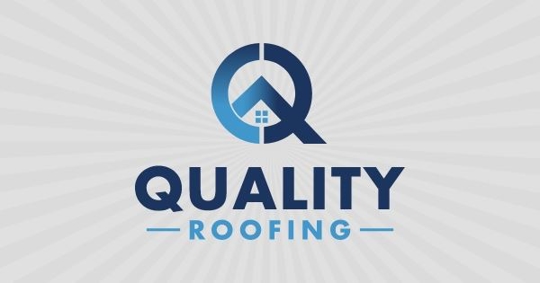The Florida climate can be brutal on a roof. Hailstorms, gale-force winds, high temperatures, high humidity, salty air, and, of course, hurricanes can damage your roof or cause premature aging in only a few years after your professional roof replacement. While some roof damage is immediate and easily visible, other types of damage can occur over time in hard-to-see areas.
For this reason, professional roof maintenance is vital to your roofing system, as it ensures that your roof will perform well, protect your family and reach its life expectancy. A roofing contractor in Florida can inspect your roof, looking for damage caused by the sun, rain, mold, condensation, high winds, or debris. Below are eight things that can cause roof damage.
UV Rays
Ultraviolet radiation (UV rays) is part of the spectrum of light we get from the sun. They can do a considerable amount of damage to your roof. The damage is similar to sunburn and cancer on your skin. Those same harmful rays beat down on your roof every day for years.
The sun can cause your roof shingles to fade and dry. They also damage the top layer of your roof material, leaving it exposed to the elements and compromising your roof’s integrity. If your shingles’ protective layers can no longer prevent water invasion, water damage is inevitable throughout the home interior.
Torrential Rain
You must know the signs of water damage on the roof since you will then take corrective action before the problem exacerbates and leads to leaking. Dangers of a leaky roof include:
- Interior mold and mildew problems, which can cause health problems
- Damage to rafters, wall framing, ceiling joists, exterior trim, and fascia boards
- Ceiling and attic damage
- Shorting of wires in the ceiling or attic
- Slip and fall accidents
- Higher utility bills due to compromised insulation
Rainwater flows underneath shingles or other roofing materials, working its way to the roof deck. Once this happens, you are in danger of the roof structure beginning to rot, which can cause mildew and mold to get into the walls, ceilings, and insulation.
Condensation
Most people assume that a leaking roof causes condensation. However, condensation often occurs due to high humidity and poor ventilation in the attic. If the air is warm and the air is humid, moisture in your attic can cause the wood structure to decay while also facilitating mold and mildew growth.
High Winds
Strong winds can lift roofing materials, allowing water and debris underneath. Extremely high winds can cause more significant structural damage. There are several ways that you can detect wind-related roof damage.
- Roof Leaks
- Missing, curling or lifting roofing material
- Gutter leaks
- Missing or damaged flashing
- Drafts inside the home
Mold and Algae
If you allow mold or algae to develop in your roofing material or the support structure, it can drastically reduce the roof’s performance and longevity. The longer the mold develops on the roof, the more damage it causes. As a result, mold growth and subsequent roof damage are among the most expensive problems to fix.
Mold is easy to spot due to its rancid smell and slimy, unattractive appearance, characterized by black, brown, and dark-green blotches. As with other damaging growths, mold results from high moisture levels or pooling water. Mold is most likely to develop on wood and drywall surfaces where water has been absorbed.
Overhanging Trees
Trees can be beneficial to roofs. A large overhanging tree can block high winds, provide UV protection and keep your house cool during the summer. However, there are also drawbacks to overhanging trees. There’s always the possibility that your tree could fall on your roof if damaged or too weak to withstand a hurricane.
Branches can scratch roofs just as they would scratch a window. If a storm blows them off the tree, they may damage the roofing material. Deciduous trees drop their leaves every fall and make a big mess on your rooftop. If you let leaves, branches, and debris collect on the rooftop, they can clog your gutters and valleys. Debris buildup also leads to mold, moss, or algae growth, which can discolor your roof or reduce its lifespan.
Damaged or Missing Roofing Shingles
Shingles are a critical component of any roof. Over time, shingles can become worn or sustain heavy damage in a storm. Since shingles make up the top layer of any roof, they are vulnerable to sunlight, heat, high winds, rain, hail, ice, or overhanging trees and debris. So, it is important to maintain the shingles to protect your home.
When shingles are missing or torn off, the open area leaves your home’s interior exposed to water damage, mold, or rot. Shingle damage can also leave nearby shingles vulnerable to damage, causing a domino effect that only worsens over time. Therefore, it is important to address issues as they occur instead of waiting for them to get worse.
Damaged Flashing
Flashing is made of metal strips attached to all seams and edges of the roof to protect it. You can identify flashing around the valleys of your roof, your chimney, and other areas where the roof needs additional water protection. When flashing cracks or bends upward, water leaks through the roof seams. Leakage is intensified during heavy rains.
Because flashing is made of steel or aluminum, you may believe that it’s sturdier than your shingles and tiles. While flashing is designed to be durable, it can still crack, warp and create blow-offs where the flashing is torn away completely. Flashing issues can occur due to improper installation, negligence, age, exposure to harsh weather, or rust caused by sea air.
Schedule a Free Roof Inspection
Quality Roofing offers premier roofing services for homeowners in Florida. Call (850) 753-0041 or fill out the quick form on our contact page to schedule a free roof inspection.
The post Roof Protection from Common Causes of Damage appeared first on Quality Roofing Solutions.

